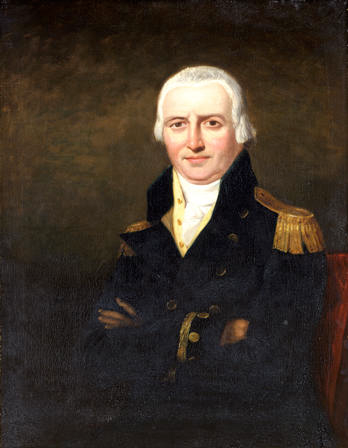Regency Personalities Series
In my attempts to provide us with the details of the Regency, today I continue with one of the many period notables.
Admiral Sir Joseph Sydney Yorke
6 June 1768 – 5 May 1831

Joseph Sydney Yorke
Admiral Sir Joseph Sydney Yorke was born in Great Berkhampstead, Hertfordshire, on 6 June 1768, the second son, by his second marriage, of the politician Charles Yorke. He joined the navy at the age of 11, becoming a midshipman aboard HMS Duke, then under the command of Sir Charles Douglas, on 15 February 1780. He followed Douglas to his next command, HMS Formidable, which flew the flag of Admiral George Rodney. Yorke was then present at Rodney’s victory over François Joseph Paul de Grasse at the Battle of the Saintes from 9 April to 12 April 1782. The end of the American Revolutionary War led to the Formidable returning to Britain to be paid off. Yorke remained in employment however, transferring with Douglas to HMS Assistance, and then moving to HMS Salisbury, under the command of Sir Erasmus Gower, filling the post of master’s mate. Yorke spent three years in total serving on the Newfoundland Station.
Yorke was promoted to lieutenant on 16 June 1789, and moved aboard the 50-gun HMS Adamant to serve under Admiral Sir Richard Hughes. He later served as lieutenant aboard HMS Thisbe and HMS Victory and in February 1791 he was appointed master and commander of the sloop HMS Rattlesnake. He remained aboard her, carrying out cruises into the English Channel until the outbreak of war with France in 1793. He was promoted to Post-Captain on 4 February 1793 and given command of the frigate HMS Circe, then part of a squadron under Admiral Richard Howe. He patrolled off the French port of Brest, and captured the corvette L’Espiegle.
Yorke moved to HMS Stag in August 1794, and continued to serve in the Channel, occasionally ranging into the North Sea. On 22 August the Stag and a small British squadron chased two large ships and a cutter, eventually bringing the sternmost one to battle. An hour-long fight ensued, after which the enemy, subsequently found to be the Batavian frigate Alliance, was forced to surrender. Yorke moved to command the newly built HMS Jason in March 1800, and by 1801 was in command of the 74-gun third rate HMS Canada. He commanded her until the Treaty of Amiens in 1802 brought a period of temporary peace. On the resumption of the war in 1803 Yorke was appointed to the 98-gun HMS Prince George, followed by HMS Barfleur and then HMS Christian VII, an 80-gun former Danish ship captured at the Battle of Copenhagen in 1807.
Yorke was knighted during this period of service, on 21 April 1805, by King George III. On 23 April, Yorke was present at the installation of the Knights of the Garter, standing in for his brother, Philip Yorke, Earl of Hardwicke. Philip was at this time Lord Lieutenant of Ireland, and so was unable to be present in person. In 1810 Joseph Yorke’s brother, Charles Philip Yorke became First Lord of the Admiralty and Joseph was transferred from command of the Christian VII to take up a seat on the Admiralty board.
Joseph Yorke was promoted to Rear-Admiral of the Blue on 31 July 1810 and hoisted his flag in the 74-gun HMS Vengeance in January 1811. He sailed to the Tagus carrying reinforcements for Arthur Wellesley’s army, fighting in the Peninsular War. After carrying this out he escorted a fleet returning to Britain from the East Indies. Yorke was promoted to Rear-Admiral of the White on 12 August 1812, Rear-Admiral of the Red on 4 December 1813, Vice-Admiral of the Blue on 14 June 1814, and served on the Admiralty board until resigning in April 1818. He was appointed a Knight Commander of the Order of the Bath (KCB) in the restructuring of that order in January 1815, promoted Vice-Admiral of the White on 12 August 1819, and promoted to Admiral of the Blue on 22 July 1830.
Yorke stood as a candidate for the constituency of Reigate in 1790, and was returned as its member. He represented the borough until 1806, when he was elected as member for St Germans. He stood aside, “taking the Chiltern Hundreds” in 1810 so that his brother, Charles Philip Yorke, could be elected. In the 1812 general election Joseph Yorke stood as a candidate for Sandwich and was returned as its member. He represented the borough until 1818 when he was re-elected to the Reigate constituency, which he represented until his death. Yorke’s business interests include the chairmanship of the Waterloo Bridge Company.
On 29 March 1798, Yorke married Elizabeth Weake Rattray, the daughter of James Rattray, in Ireland. The couple had a number of children before Elizabeth’s death on 20 January 1812. His eldest son, Charles Yorke also served in the navy, rising to the rank of Admiral, and on the death without heir of Joseph Yorke’s brother Philip, the 3rd Earl of Hardwicke in 1834, Charles became the 4th Earl. On 22 May 1813, Joseph married a second time, to Urania Anne, the Dowager Marchioness of Clanricarde, and daughter of George Paulet, 12th Marquess of Winchester, at St. Martin in the Fields, Westminster, London. The marriage did not produce any children.
On 5 May 1831 Yorke was returning from visiting Henry Hotham’s flagship, HMS St Vincent, then moored at Spithead. He was making his way back to shore aboard the yacht Catherine, in company with Captains Matthew Barton Bradby and Thomas Young, and a seaman named John Chandler, when the boat was struck by lightning in Stokes Bay, causing it to capsize. All aboard were drowned. The bodies were later recovered and an inquest returned a verdict of accidental death. Yorke was buried at the family tomb in the parish church at Wimpole, close to Wimpole Hall, the seat of the Earls of Hardwicke.
Read Full Post »

































